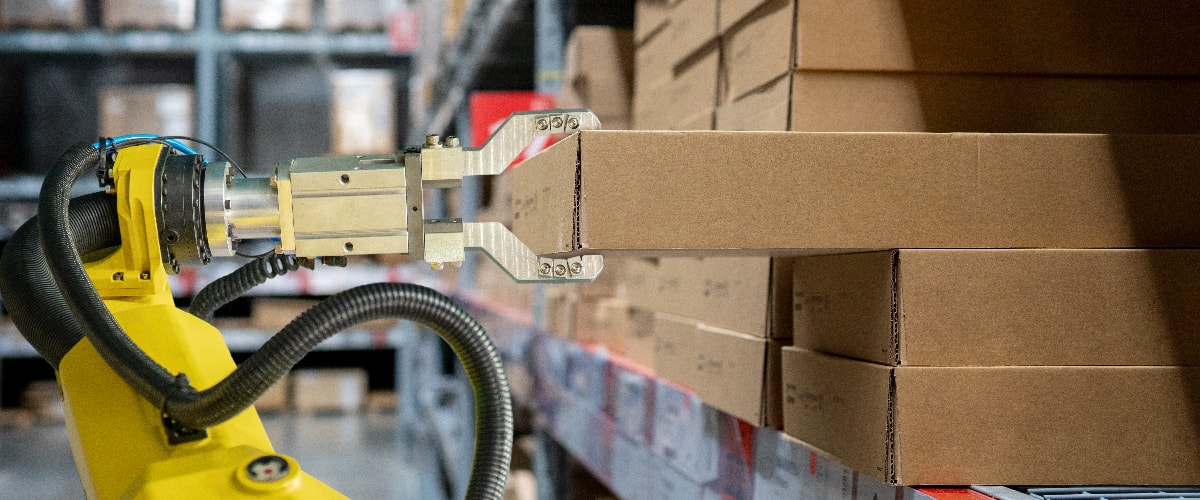 Web Content Viewer
Web Content Viewer
Best Practices on the Road to Automating the Warehouse

The global warehouse automation market is forecasted to hit $27 billion by 2025, which is more than twice the $13 billion businesses invested in warehouse automation in 2018 — a clear signal that manufacturers and distributors view automation as an operational priority going forward.
To improve visibility to important insights and ensure the success of your warehouse implementation, there are several best practices to keep in mind:
1. Reconnect with the way your people work.
The implementation of any new tool or technology offers an opportunity to learn (or re-learn) how your frontline workers actually operate in the warehouse. For example, consider a simple barcode system for tracking inventory. While some barcode systems support wrist-based computers with ring scanners, others only support handheld options. Before you can decide which option is best for your operation, you need to determine which warehouse activities require workers to use their hands for other tasks.
There are many ways to capture insights about the way frontline workers perform tasks, from the simple observation of workers in the warehouse to a formal audit of their daily movements. But whatever method you choose, don’t skip this step — it’s critical to evaluate work routines to avoid a misalignment of people and technology.
2. Secure buy-in from downstream partners.
Inevitably, changes in your operation will affect downstream partners. Maybe an automated solution requires your labels to follow a different standard. Or maybe a new inventory tracking system will require partners to upgrade their hardware. Whatever the case, it’s smart to get ahead of the change and avoid disruption through careful planning.
Conduct a pilot with trusted partners long before you deploy a new system. If the pilot is successful, start a conversation with each partner that will be affected by the change, touting the benefits of the new system or process. As clearly as possible, map out how downstream partners’ cooperation will benefit them in the long run. This is more than a common courtesy. Securing the buy-in of downstream partners early increases the likelihood of their cooperation with future technology improvements, paving the way for more benefits.
It’s also important to note that down the line, partnerships will play an even bigger role in the industry. With IoT and 5G set to unlock new possibilities in warehouses and factories, supply chains will eventually settle on new standards and practices. As time goes on, we will likely see more associations and professional alliances form around industry technologies and their associated standards.
3. Set time aside to measure.
A deliberate approach to the implementation of warehouse automation technology affords the time to measure outcomes — a prerequisite for the success of your initiative. For example, do the metrics show that the results of automating a single production line might make automating additional lines worthwhile? If so, can the technology even scale? Answering these questions can be surprisingly difficult if you didn’t think about how to measure success before you started.
To gauge whether a deployment is successful, establish KPIs to measure how the business, the customer, and downstream suppliers are affected. Ideally, the KPIs you identify should quantify outcomes and demonstrate that none of the three stakeholders (business, customer, and downstream suppliers) experiences a negative impact.
4. Embrace upstream mandates as opportunities.
When you’re in the midst of a warehouse automation implementation, mandates seem daunting, especially if they appear to threaten the success of your initiative. However, it’s not uncommon for upstream partners to issue mandates that will inevitably impact the use of automation in your warehouse.
Instead of treating mandates as hindrances, it’s more useful to view them as opportunities. Commit to listening to the concerns of the upstream partners that will use new systems and may require certain upgrades or modifications. Although these concerns may feel like a short-term barrier to implementation, they can provide significant benefits for your partners and your operation in the long run.
Automation represents the future of warehouse operations. With these best practices in your automation planning, you can achieve operational gains that directly impact your organization’s bottom-line and allow you to forge stronger connections with partners on both sides of the supply chain.
Gina Parry
National Account Manager
National Account Manager
Comments
By using this site you agree to our Privacy Policy and our Terms of Use.
120 Comac Street
Ronkonkoma, NY 11779
Ronkonkoma, NY 11779
 | Vormittag Associates, Inc. ©2025 |
| Vormittag Associates, Inc. ©2025 |